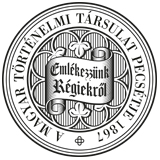Századok – 2014
TANULMÁNYOK - Neumann Tibor: A gróf és a herceg magánháborúja. (Szapolyai István és Corvin János harca a liptói hercegségért) II/387
SZAPOLYAI ISTVÁN ÉS CORVIN JÁNOS HARCA A LIPTÓI HERCEGSÉGÉRT 425 Since after 1490 the duke was pressured by the growing burden of his debts into mortgaging three among his castles there to his own retainers, the palatine set about the validation of his claims by taking Bajmóc in Nyitra county at the turn of 1493/94 in a way described minutiously in the present study. Through an analysis of the consequent events and the baronial groupings which played a role therein the author has come to the conclusion that early in 1493 a strong aristocratic opposition was formed against king Wladislaw II, who aimed to cut short his dependence from the old barons of Matthias. The new coalition was headed at first by István Báthori, who had been removed from the voevodship of Transylvania at the beginning of 1493, and, after his death in June 1493, by Szapolyai himself, whose strongest allies were duke Lőrinc Újlaki and the renowned captain of king Matthias, Pál Kinizsi, then ispán of Temes. Under intense pressure from his baronial oppponents, the king’s rule ushered in a crisis in 1493-1494, one of the symptoms of which was the series of private wars which were fought then. This lay in the background of the secret treaty that Wladislaw II entered into with his own brother, the king of Poland, in the course of the Jagiellonian summit held at Lőcse (April-May 1494), which was directed in general against their respective disobedient subjects, but probably more concretely targeted at Szapolyai, whose lands lay along the border between the two kingdoms. In order to buttress his own position at home, the king launched a brief campaign against the Ottomans in the autumn of 1494, and, upon hearing the news of Kinizsi’s death, turned his army against the southern castles of duke Lőrinc Újlaki, the closest ally of palatine Szapolyai (November 1494-March 1495). The defeat inflicted upon the duke left palatine Szapolyai completely isolated, and with no other choice than to make peace with the king, which in fact happened in May 1495. The domestic political situation was consolidated thereby, and the palatine remained faithful to the ruler until his death in 1499. Although in May 1495 the king did acknowledge the acquisitions and claims of Szapolyai with regard to the Duchy of Liptó, Corvin, who back in the summer of 1494 had been forced to ascribe the castles of the Duchy to Szapolyai, profited from the weakening position of the palatine to withhold the castles of Likava and Arva. In the second half of 1495, fearing that the palatine would take the two castles by assault, Corvin recruited mercenaries in Poland to thus strengthen his castles. Yet in the ensuing conflict the king took sides with Szapolyai, and launched an expedition against the ducal castles in Liptó on account of the induction of the Polish mercenaries. The expedition was led by the palatine himself, whose troops joined battle with the Poles sometime before 2 March 1496. Although the palatine emerged victorious, the castles continued to be garrisoned by Polish soldiers. Since in the meantime duke Corvin had begun to intrigue against the royal court in Croatia, Wladislaw decided to suspend the operations in the north, and soon entered into a temporary settlement with Corvin. Consequently, the two castles did not pass onto the hands of Szapolyai. The Polish mercenaries were eventually indemnified and paid by two retainers of Corvin, András and Mihály Horvát of Lomnica, who thereby retained the two castles by right of pledge. Likava and Arva were finally redeemed from the Horvát brothers by the widow and sons of István Szapolyai after the death of Corvin and with the permission of his widow, Beatrix Frangepán, after 1505.
